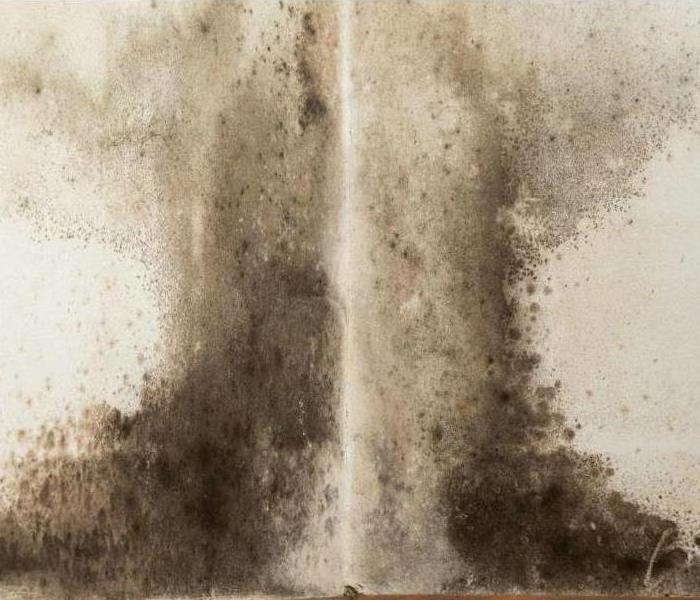Recent Mold Remediation Posts
Do I Have to Worry About Mold in Colder Months?
2/1/2022 (Permalink)
A lot of people think they are off the hook in colder months when it comes to worrying about mold forming in their properties. While it is slightly less common for mold to appear in lower temperatures, it is definitely possible.
Mold requires three things in order to grow and survive- moisture, a food source, and the right temperature. There is a robust amount of different species of mold and most of them do thrive between the temperatures of 60-80 degrees Fahrenheit. Each type of mold has a minimum and maximum temperature in which is is able to survive.
It is also a common belief that mold dies in lower temperatures. This, too, is a misconception. Colder weather will "pause" the growth/spread of mold, but mold is opportunistic and waits for the right time to reactivate and thrive.
Knowing that mold can still grow in the winter is even more of a reason to properly care for your properties and prep for the warmer temperatures as mold is likely to become more evident. Keeping a space at the right temperature isn't always enough- it is critical to control humidity levels to keep mold growth at bay.
Summer Doesn't Have to Mean Mold
7/1/2021 (Permalink)
For a lot of people, summer weather brings mold. It doesn't have to! Here are a few basic tips to prevent mold in the summer months.
Control Humidity
Mold needs water to grow and enough humidity in your home can be the perfect recipe for mold. Investing in a dehumidifier is a plus but if you're not able to, monitor moisture within your home coming from showers, outside, appliances, etc.
Control Overall Temperature
The optimal temperature for mold growth is anywhere between 77 and 86 degrees Fahrenheit. Make an effort to keep inside temperatures at bay to reduce the risk of mold growth.
Promote Air Circulation
Keeping vents open and utilizing fans is a great was to ensure air is circulation throughout your home. This prevents mold from having the chance to grow!
We hope these tips are found to be useful but should you find mold in your home, SERVPRO of Queen Anne's, Kent & Caroline Counties here Here to Help!
Debunking "Black Mold"
2/12/2021 (Permalink)
We often receive calls from clients in a panic, worried because they have found "black mold". While mold in any form is scary enough, add the color black to it and it definitely gives you a reason to be concerned! The truth is, "black mold" is really no worse than any other mold and the color serves no real significance!
Mold can take many colors but is most often seen to be gray, black, brown or green. Mold color can be influence by humidity level, the surface its on, it's food source, humidity levels and even light. The same type of mold can be many different colors and can even change color over time!
While you should pay attention to all mold, it is important you do not assume that mold of a certain color is releasing mycotoxins. The risk of mold should never be assessed solely on the color of the visible mold.
Active, visible mold growth means there is or has been a source of moisture. The moisture source must be identified and stopped. If you suspect mold of any kind, call SERVPRO of Queen Anne's, Kent & Caroline Counties to assess the situation and remediate it properly! As always, we are Here to Help. 443-737-8776





 24/7 Emergency Service
24/7 Emergency Service

